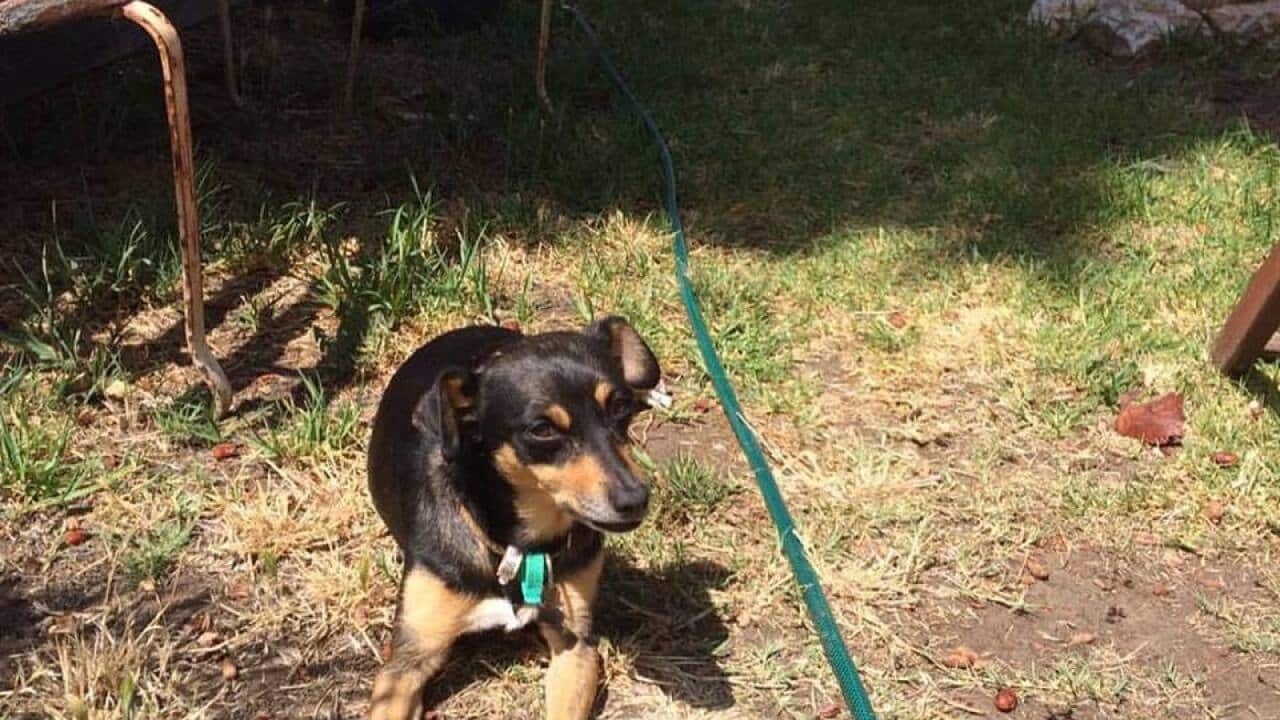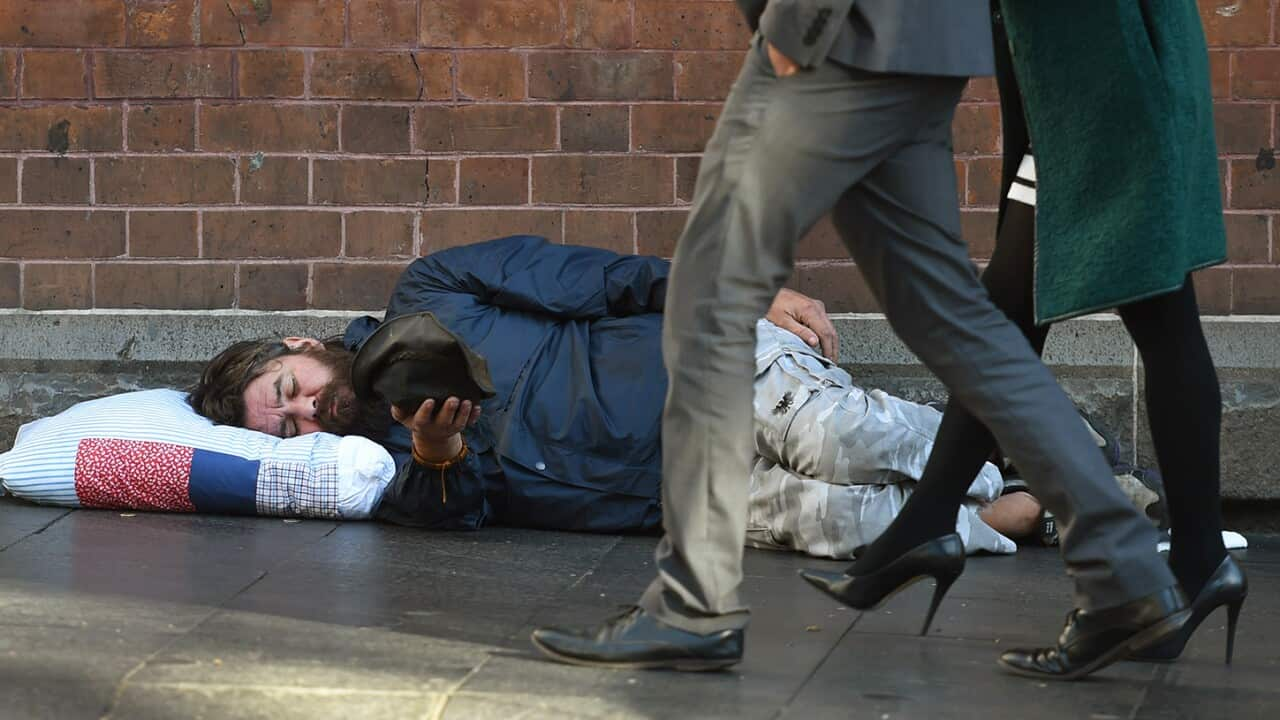Buying a home is one of the most talked about issues in Australia today – because fewer and fewer people can afford it.
Across the country, . In Sydney, house prices jumped nearly 19 per cent in the 12 months to March. Melbourne experienced a increase in the same period.
Countless have told how the high cost of housing in Sydney and Melbourne has frozen first home buyers and out of the market.
Often overlooked is what is happening at the other end of the spectrum. A hot property market has led to a sharp increase in rents. A new report has revealed a lack of affordable housing and widespread rental stress (where over 30 per cent of household income goes to rent).
The evidence is unambiguously clear that the biggest driver of homelessness in Australia is the lack of housing affordable for people on low to moderate incomes.
Anglicare’s surveyed 67,000 rental properties across one weekend and found that less than one per cent was affordable for people on minimum wage or who receive Centrelink benefits. The number of properties affordable for people receiving the aged pension have reduced by half.
Director of advocacy at Anglicare Sydney Sue King that it was the worst result since the survey started seven years ago. “For single people who are working on the minimum wage, single people on Newstart, single people on disability support benefits — there is absolutely nothing available,” she said.
Other demographics with an elevated risk of homelessness include women leaving abusive relationships, Indigenous Australians and people leaving incarceration.
“The evidence is unambiguously clear that the biggest driver of homelessness in Australia is the lack of housing affordable for people on low to moderate incomes,” says Cameron Parsell, a Research Fellow at the University of Queensland. “For people who are homeless, the lack of affordable housing is the biggest barrier that there is for them to exit homelessness.” Until data from the 2016 census is released later in the year, it’s hard to say if homelessness has increased directly due to the housing affordability crisis. The most recent data available this year comes from the , when 105,000 people were deemed homeless, eight per cent up from 2006.
Until data from the 2016 census is released later in the year, it’s hard to say if homelessness has increased directly due to the housing affordability crisis. The most recent data available this year comes from the , when 105,000 people were deemed homeless, eight per cent up from 2006.

A hot property market has led to a sharp increase in rents. (Getty Images) Source: Getty, Moment RF
Anecdotally, street counts of people sleeping rough in Melbourne and Sydney show an increase in homelessness, says Parsell. “We know most people in Australia who are homeless don't actually sleep on the streets though; that's a minority of the broader homeless population.”
According to the ABS, the increase in homelessness between 2006 and 2011 was due to people, mostly born overseas, living in severely overcrowding dwellings (up from 31,531 in 2006 to 41,390 in 2011).
Housing affordability also affects the lives of people who are economically and socially on the margin who Parsell says tend to live in unaffordable private rentals rather than social housing.
The result is often “families doubling up”, where people live in severely overcrowded houses, also a form of homelessness. According to the ABS, the increase in homelessness between 2006 and 2011 was due to people, mostly born overseas, living in severely overcrowding dwellings (up from 31,531 in 2006 to 41,390 in 2011).
It also pushes people into the unregulated peripheral rental market where someone might sublease a garage, spare room or a room in an unofficial boarding house. These informal arrangements are “precarious” and ripe for exploitation, says Parsell. “The rents are still very expensive, and there's no sense of 'home' or amenity that we would hope people deserve in Australia.”
Little is known about the peripheral market, but it is believed to be large. “We know that it's prevalent, because people on very low incomes, they've got nowhere else to go, there's nowhere else they can empirically afford.”
These arrangements are often unsafe. After 15 foreign nationals escaped a fire that gutted a ‘’ in Alexandria in 2014, the City of Sydney revealed it was investigating over 1000 cases of overcrowded and unauthorised accommodation.
When people have access to housing that is safe and affordable, they no longer have to live as patients, criminals, inmates, clients, and homeless people.
One solution - and indeed a preventative measure - to homelessness is social housing, something Australia lacks. Just of Australia’s housing stock is public housing (compared to 20 per cent in Denmark). puts the shortfall at 270,000.
According to , it costs $13,000 less per year to provide supportive housing for someone who is homeless than the current cost of funding homelessness services (A$35,117 vs. A$48,217). He says helping people escape homelessness also reduces the burden on the criminal justice and health systems as well as the need for homeless services.
“When people have access to housing that is safe and affordable,” he writes, “they no longer have to live as patients, criminals, inmates, clients, and homeless people.”
season 2 airs over three nights starting on Tuesday 14 August 8.30pm on SBS. You can also stream the show anytime on . Join the conversation with #FilthyRichHomeless.
If this article has raised issues for you and you would like to talk to someone, please on 13 11 14 or visit their website by . For information about services from St Vincent De Paul, or for services offered by Salvation Army,





